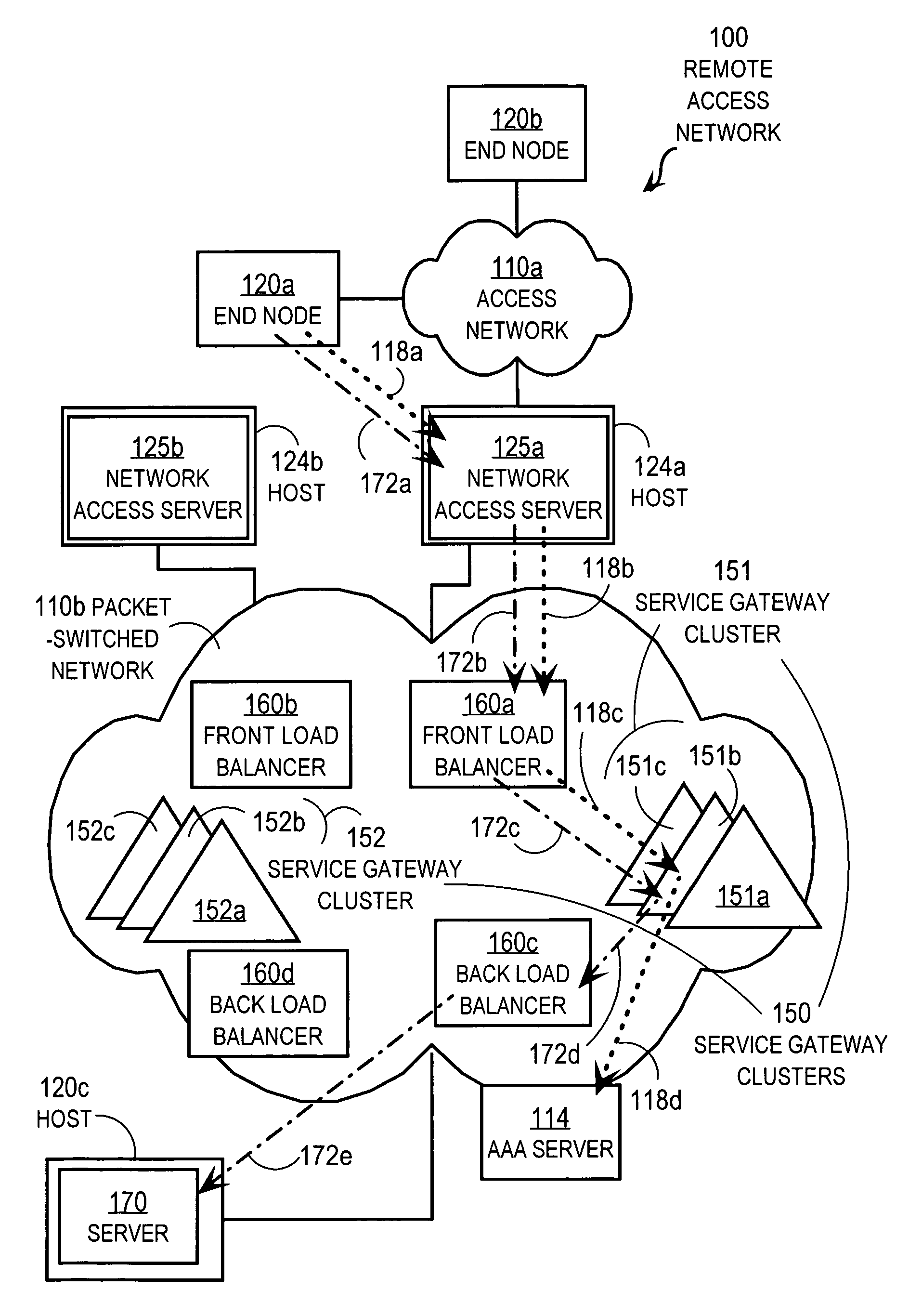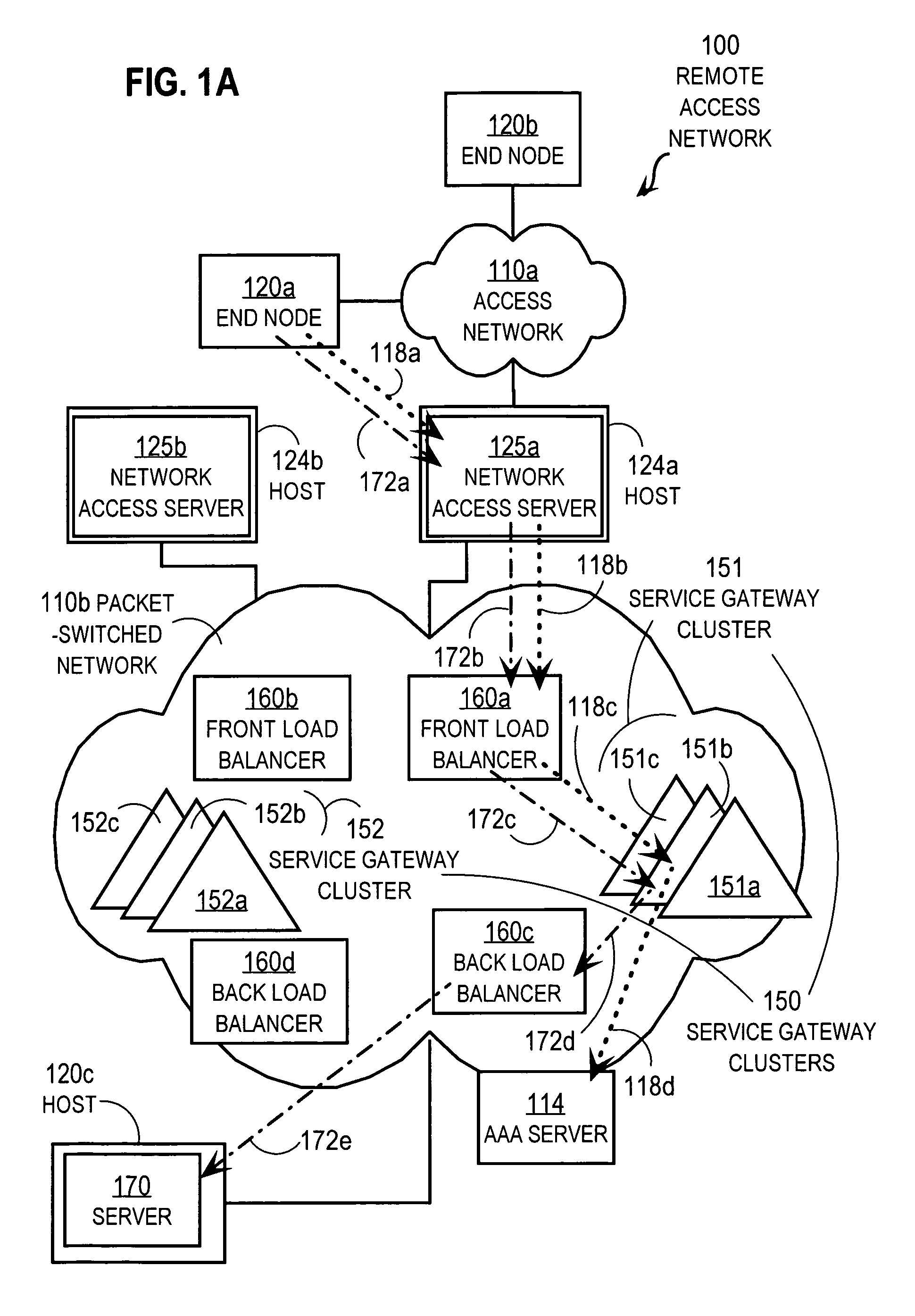Techniques for load balancing over a cluster of subscriber-aware application servers
a subscriber-aware application server and load balancing technology, applied in the field of traffic load distribution, can solve the problems of consuming further resources, requiring the sticky table itself and the consumption of memory and processor resources to store and maintain the sticky table, and placing a heavy load on the processing capability of the router
- Summary
- Abstract
- Description
- Claims
- Application Information
AI Technical Summary
Benefits of technology
Problems solved by technology
Method used
Image
Examples
first example embodiments
3.1 First Example Embodiments
[0049] In step 310, the load balancer receives a control plane message from the end node. In the illustrated embodiment, as a proxy for the AAA server, the load balancer (e.g., SG LB 160a) receives an AAA request during step 310 from an end node or an access node for an adjacent network, such as from an NAS. The load balancer then selects one of the service gateways in a SG cluster that is appropriate for traffic from that NAS according to steps 320 and 330.
[0050] For example, a RADIUS request is typically made after an IP address is assigned to the subscriber, e.g. to end node 120a. For example, a dynamic host configuration protocol (DHCP) message exchange occurs to assign an IP address to end node 120a. Then a particular subscriber (e.g., subscriber Smith) uses end node 120a to try to access network 110b by sending a message with a user identifier (user ID) to NAS 125a. That message has in a source address field of its IP header the IP address of node...
second example embodiments
3.2 Second Example Embodiments
[0064] In second example embodiments, step 330, to determine a control plane service gateway that is the same as will be used by the data plane, includes steps 332, 334, 336, 338. In step 332 a test data plane message is constructed with a layer 3 source address based on the subscriber network ID. In an illustrated embodiment, it is assumed that the PBR is based on source IP only to better protect against DoS attacks from a certain subscriber. During step 332 the source IP for the test message is determined from the framed-IP address in the RADIUS request payload. It is assumed for illustration, that the PBR policy depends only on the Protocol and source address and is independent of the other elements of a 5-tuple that defines a data flow. It is further assumed that a test data plane message is constructed with the values of a 5-tuple data flow identifier as given in Table 2, using the framed-IP address in the control plane message received (last line ...
PUM
 Login to View More
Login to View More Abstract
Description
Claims
Application Information
 Login to View More
Login to View More - R&D
- Intellectual Property
- Life Sciences
- Materials
- Tech Scout
- Unparalleled Data Quality
- Higher Quality Content
- 60% Fewer Hallucinations
Browse by: Latest US Patents, China's latest patents, Technical Efficacy Thesaurus, Application Domain, Technology Topic, Popular Technical Reports.
© 2025 PatSnap. All rights reserved.Legal|Privacy policy|Modern Slavery Act Transparency Statement|Sitemap|About US| Contact US: help@patsnap.com



